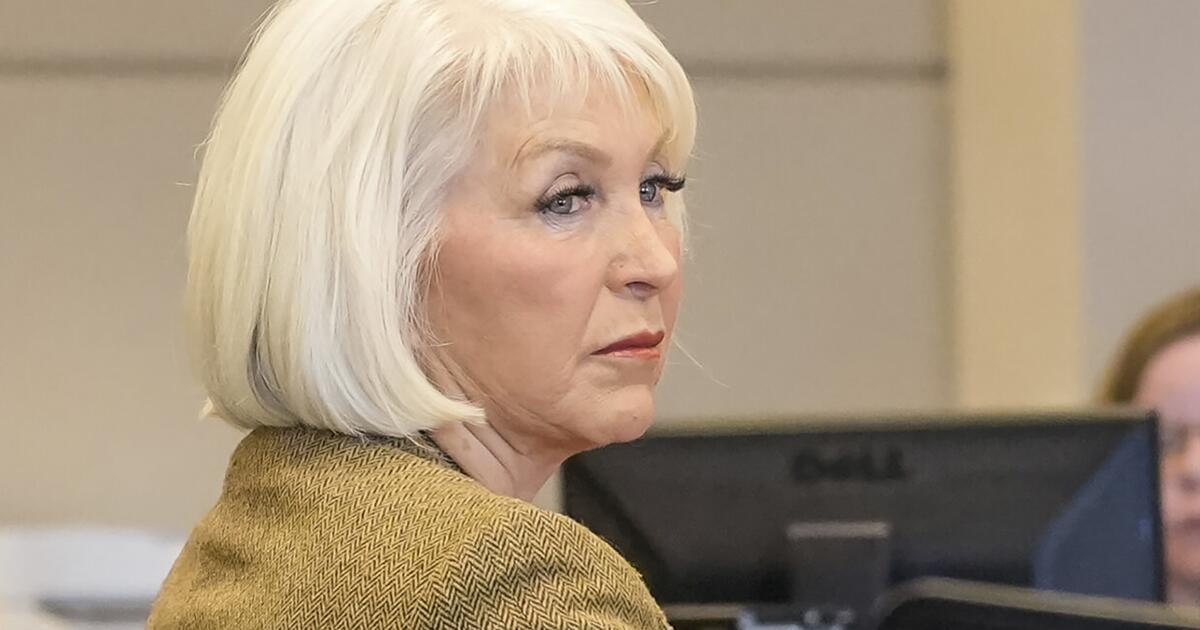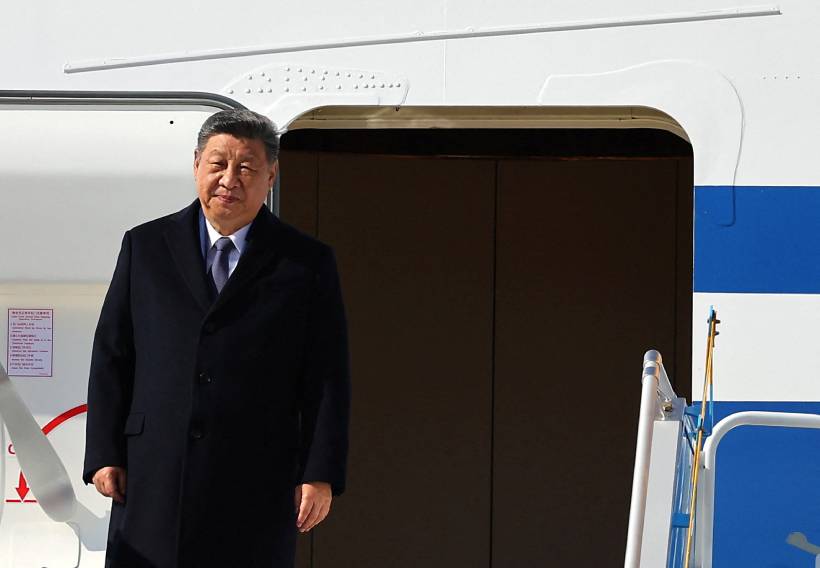Rights groups condemn new record number of executions in 2025
Caroline HawleyDiplomatic correspondent
 ESOHR
ESOHRSaudi Arabia has surpassed its record for the number of executions carried out annually for a second year in a row.
At least 347 people have now been put to death this year, up from a total of 345 in 2024, according to the UK-based campaign group Reprieve, which tracks executions in Saudi Arabia and has clients on death row.
It said this was the “bloodiest year of executions in the kingdom since monitoring began”.
The latest prisoners to be executed were two Pakistani nationals convicted of drug-related offences.
Others put death this year include a journalist and two young men who were children at the time of their alleged protest-related crimes. Five were women.
But, according to Reprieve, most – around two thirds – were convicted of non-lethal drug-related offences, which the UN says is “incompatible with international norms and standards”.
More than half of them were foreign nationals who appear to have been put to death as part of a “war on drugs” in the kingdom.
The Saudi authorities have not responded to the BBC’s request for comment on the rise in executions.
“Saudi Arabia is operating with complete impunity now,” said Jeed Basyouni, Reprieve’s head of death penalty for the Middle East and North Africa. “It’s almost making a mockery of the human rights system.”
She described torture and forced confessions as “endemic” within the Saudi criminal justice system.
Ms Basyouni called it a “brutal and arbitrary crackdown” in which innocent people and those on the margins of society have been caught up.
Tuesday saw the execution of a young Egyptian fisherman, Issam al-Shazly, who was arrested in 2021 in Saudi territorial waters and said he had been coerced into smuggling drugs.
Reprieve says that 96 of the executions were solely linked to hashish.
“It almost seems that it doesn’t matter to them who they execute, as long as they send a message to society that there’s a zero-tolerance policy on whatever issue they’re talking about – whether it’s protests, freedom of expression, or drugs,” said Ms Basyouni.
There has been a surge of drug-related executions since the Saudi authorities ended an unofficial moratorium in late 2022 – a step described as “deeply regrettable” by the UN human rights office.
Speaking anonymously to the BBC, relatives of men on death row on drugs charges have spoken of the “terror” they’re now living in.
One told the BBC: “The only time of the week that I sleep is on Friday and Saturday because there are no executions on those days.”
Cellmates witness people they have shared prison life with for years being dragged kicking and screaming to their death, according to Reprieve.
 Reuters
ReutersThe de facto ruler of Saudi Arabia, Mohammed bin Salman – who became crown prince in 2017 – has changed the country profoundly over the past few years, loosening social restrictions while simultaneously silencing criticism.
In a bid to diversify its economy away from oil, he has opened Saudi Arabia up to the outside world, taken the religious police off the streets, and allowed women to drive.
But the kingdom’s human rights record remains “abysmal”, according to the US-based campaign group Human Rights Watch, with the high level of executions a major concern. In recent years, only China and Iran have put more people to death, according to human rights activists.
“There’s been no cost for Mohammed bin Salman and his authorities for going ahead with these executions,” said Joey Shea, who researches Saudi Arabia for Human Rights Watch. “The entertainment events, the sporting events, all of it is continuing to happen with no repercussions, really.”
According to Reprieve, the families of those executed are usually not informed in advance, or given the body, or informed where they have been buried.
The Saudi authorities do not reveal the method of execution, although it is believed to be either beheading or firing squad.
In a statement sent to the BBC, the UN’s special rapporteur on extrajudicial, summary or arbitrary executions, Dr Morris Tidball-Binz, called for an immediate moratorium on executions in Saudi Arabia with a view to abolition, as well as “full compliance with international safeguards (including effective legal assistance and consular access for foreign nationals), prompt notification of families, the return of remains without delay and the publication of comprehensive execution data to enable independent scrutiny”.
 Amnesty International
Amnesty InternationalAmong the Saudi nationals executed this year were Abdullah al-Derazi and Jalal al-Labbad, who were both minors at the time of their arrest.
They had protested against the government’s treatment of the Shia Muslim minority in 2011 and 2012, and participated in the funerals of people killed by security forces. They were convicted of terrorism-related charges and sentenced to death after what Amnesty International said were grossly unfair trials that relied on torture-tainted “confessions”. UN human rights experts had called for their release.
The UN also condemned the execution in June of the journalist, Turki al-Jasser, who had been arrested in 2018 and sentenced to death on charges of terrorism and high treason based on writings he was accused of authoring.
“Capital punishment against journalists is a chilling attack on freedom of expression and press freedom,” said Unesco’s Director-General, Audrey Azoulay.
Reporters Without Borders said he was the first journalist to be executed in Saudi Arabia since Mohammed bin Salman came to power, although another journalist, Jamal Khashoggi, was murdered by Saudi agents at the Saudi consulate in Istanbul in 2018.
 Human Rights Watch
Human Rights WatchLast December, UN experts wrote to the Saudi authorities to express concern over a group of 32 Egyptians and one Jordanian national who had been sentenced to death on drugs charges, and their “alleged absence of legal representation”. Since then, most of the group have been executed.
A relative of one man put to death earlier this year said that he had told her that people were being “taken like goats” to be killed.
The BBC has approached the Saudi authorities for a response to the allegations but has not received one.
But in a letter dated January 2025 – in reply to concerns raised by UN special rapporteurs – they said that Saudi Arabia “protects and upholds” human rights and that its laws “prohibit and punish torture”.
“The death penalty is imposed only for the most serious crimes and in extremely limited circumstances,” the letter stated. “It is not handed down or carried out until judicial proceedings in courts of all levels have been completed.”
‘The Elephant’ review: A captivating special about reincarnation
Animation is an art of the impossible, though it often settles for the ordinary. Much of what comprises adult animation merely translates into line what might be shown in live action — humans in human settings. Which is fine. Some great shows fit that bill — “King of the Hill” and “Bob’s Burgers,” for example. Still, there are infinite avenues to explore, and so it’s good to have Adult Swim, the network that once produced a series whose heroes are a meatball, a shake and a bag of fries, still making aesthetic trouble.
“The Elephant,” which premieres Friday on the network, and Saturday on HBO Max alongside a documentary on its creation, “Behind the Elephant,” is an animated take on exquisite corpse, the old surrealist game in which three artists contribute the head, torso or legs of a single figure, folding the paper so as not to see what the others had drawn. This project enlists four fab animators over three acts — “Adventure Time” creator Pendleton Ward, Ian Jones-Quartey (“OK K.O.! Let’s Be Heroes”), Rebecca Sugar (“Steven Universe”) and Patrick McHale (“Over the Garden Wall”) — to make something that not only had we not seen before, but none of them had either, until their independently produced parts were put together. All are “Adventure Time” vets, as are Jack Pendarvis and Kent Osborne, who conceived the idea, served as “game keepers,” and share story credit with the animators.
Exquisite corpse was also used in character design. It invariably produces monsters, if amusing ones, which explains why the character — let’s call her The Character — in Ward’s act has a cactus for an arm and a giant pink foot in place of one leg. In the Jones-Quartey and Sugar act, she has robot arms, fishnet stockings and a “music button” in her chest (the city parties when its disco plays), and in McHale’s, a TV for a torso. One regards The Character as the same person in each act, and through changes that occur within each act — identity, death and reincarnation are at the heart of the show. She’s always different, though always the protagonist. (And seemingly female.) Which is not surprising if you’ve ever watched “Adventure Time,” where even every villain is also a protagonist.
Ward takes the first act; Jones-Quartey and Sugar, who are married, worked together on the second; and McHale brings it home with Act 3. Ward’s section is easily recognizable as his work in its mix of the uncanny and the offhand, both from “Adventure Time” and the psychedelic “Midnight Gospel.” Sugar and Jones-Quartey opt for a New Wave angularity far from their usual styles, and McHale cycles through several looks until his Character, who arrives already hoping to get off this wheel of endless rebirth and cease to exist, settles down for a spell in a realistically portrayed city in the snow — New York, I’d say — in conversation with a lonely inventor. McHale also brings in, for just a few seconds, the eponymous elephant in an apropos reference to the parable of the blind men who imagined that animal to be a different sort of beast depending on where they laid their hands.
Each animator (or team) integrates their position in the game — and the nature of the game itself — into their storytelling. Ward’s Character, born onscreen, wonders “What am I? I’m not sure.” In the second section, Sugar and Jones-Quartey have their narrating Character say, “I could feel my existence stretching in both directions, back to the nothingness before anything happened and forward to the nothingness after everything is over. And if everything has a beginning and also a end then this was just the middle.” By virtue of owning the conclusion, and it’s a moving one, McHale brings order to the whole; given the scattered process, and the changes between and within each section, it feels remarkably cohesive and intentional. But metamorphosis is the soul of animation.
If “The Elephant,” described by the network as “a creative experience,” had appeared before it was already published, it would have certainly joined four other animated series — three from Adult Swim — on my list of 2025 favorites. It demands a second viewing, and you’ll want to watch “Behind the Elephant” to learn more. You may want to watch that twice as well.
Trump issues a phony pardon for election fraudster Tina Peters
DENVER — Just in time for the holidays, President Trump has issued another of his dubious pardons. Or rather, make that a “pardon.”
This one comes on behalf of a former Colorado elections official serving a nine-year sentence for election fraud.
“Democrats have been relentless in their targeting of TINA PETERS, a Patriot who simply wanted to make sure our elections were fair and honest,” Trump said in a typically gaseous, dissembling post on social media.
“Tina is sitting in a Colorado prison for the ‘crime’ of demanding Honest Elections,” the president went on. “Today I am granting Tina a full pardon for her attempts to expose voter fraud in the rigged 2020 Presidential Election.”
Actually, Peters’ crime was conspiring to let an unauthorized person access voting equipment as part of a nutty scheme to “prove” the November 2020 balloting was bogus, then lying and covering up her illegal actions.
And she’s not likely to leave jail anytime soon.
That’s because Trump has precisely zero say over Peters’ fate, given the former Mesa County elections chief was convicted on state charges. The president’s pardon power — which Trump has twisted to a snapping point — extends only to federal cases. If we’re going to play make-believe, then perhaps Foo-Foo the Snoo can personally escort Peters from prison and crown her Queen of the Rockies.
That’s not to suggest, however, that Trump’s empty gesture was harmless. (Apologies to Foo-Foo and Dr. Seuss.)
Some extremists, ever ready to do Trump’s malevolent bidding, have taken up Peters’ cause, using the same belligerent language that foreshadowed the Jan. 6, 2021, attack on the U.S. Capitol. In fact, threats have come from some of the very same thugs whom Trump pardoned in one of the first shameless acts of his presidency.
“WE THE PEOPLE ARE COMING TO BREAK TINA PETERS OUT OF PRISON IN 45 DAYS,” Jake Lang, a rioter who was charged with attacking police with an aluminum baseball bat, said on social media. “If Tina M. Peters is not released from La Vista Prison in Colorado to Federal Authorities by January 31st, 2026; US MARSHALS & JANUARY 6ERS PATRIOTS WILL BE STORMING IN TO FREE TINA!!”’
(Capitalization and random punctuation are apparently the way to show fervency as well as prove one’s MAGA bona fides.)
Enrique Tarrio, the former head of the Proud Boys extremist group whom Trump also pardoned, shared a screenshot of the president’s social media post. “A battle,” Tarrio said, “is coming.”
Trump’s pretend pardon is not the first intervention on Peters’ behalf.
In March, the Justice Department asked a federal judge to free her from prison, saying there were “reasonable concerns” about the length of Peters’ sentence. The judge declined.
In November, the administration wrote the Colorado Department of Corrections and asked that Peters be transferred to federal custody, which would presumably allow for her release. No go.
Earlier this month, apparently looking to up the pressure, the Justice Department announced an investigation of the state’s prison system. (Perhaps Peters was denied the special “magnetic mattress” she requested at her sentencing, to help deal with sleep issues.)
Like any child, when Trump doesn’t get his way he calls people names. On Monday, he set his sights on Colorado’s Democratic governor, Jared Polis — “a weak and pathetic man” — for refusing to spring Peters from state prison.
“The criminals from Venezuela took over sections of Colorado,” Trump said, “and he was afraid to do anything, but he puts Tina in jail for nine years because she caught people cheating.”
The only true part of that statement is that Colorado does, in fact, exist.
While Trump portrays Peters as a martyr, she is nothing of the sort.
As Polis noted in response to Trump’s “pardon,” she was prosecuted by a Republican district attorney and convicted by a jury of her peers — a jury, it should be noted, that was drawn from the citizenry of Mesa County. The place is no liberal playpen. Voters in the rugged enclave on Colorado’s Western Slope backed Trump all three times he ran for president, by margins approaching 2-to-1.
If Peters’ sentence seems harsh — which it does — hear what the judge had to say.
Peters was motivated not by principle or a search for the truth but rather, he suggested, vanity and personal aggrandizement. She betrayed the public trust and eroded faith in an honestly run election to ingratiate herself with Trump and others grifting off his Big Lie.
“You are as privileged as they come and you used that privilege to obtain power, a following and fame,” Judge Matthew Barrett told Peters in a lacerating lecture. “You’re a charlatan who used and is still using your prior position in office to peddle a snake oil that’s been proven to be junk time and time again.”
Peters remains unrepentant.
In petitioning Trump for a pardon, her attorney submitted nine pages of cockamamie claims, asserting that Peters was the victim of a conspiracy involving, among others, voting-machine vendors, Colorado’s secretary of state and the Venezuelan government.
To her credit, Peters has rejected calls for violence to set her free.
“Tina categorically DENOUNCES and REJECTS any statements or OPERATIONS, public or private, involving a ‘prison break’ or use of force against La Vista or any other CDOC facility in any way,” a post on social media stated, again with the random capitalization.
Perhaps the parole board will take note of those sentiments when the 70-year-old Peters becomes eligible for conditional release in January 2029, a date that just happens to coincide with the end of Trump’s term.
Which seems fitting.
Keep Peters locked up until then, serving as an example and deterrent to others who might consider emulating her by vandalizing the truth and attacking our democracy.
Lakers vs. Clippers takeaways: Lakers seek consistency from refs

Clipper Kris Dunn grabs Laker Maxi Kleber ‘s jersey in front of a ref Saturday at the Intuit Dome.
(Ronald Martinez / Getty Images)
The Lakers have been assessed five technical fouls in the last two games because of conduct with officials as frustration over inconsistent calls is starting to boil over. After Doncic, Jaxson Hayes and Marcus Smart were all given technical fouls in the third quarter of Thursday’s win over Utah, Doncic and Smart were T’ed up again Saturday in the first and third quarters, respectively.
“I think if any coach, any player, what we ask for is consistency,” Redick said. “And that’s not to single any official out or any crew out, it’s not about that. We need to know what it is night to night.”
Smart also drew a technical foul against Utah after attempting to talk to an official at halftime. When Smart walked away frustrated, he raised his middle finger toward the official, a gesture that got him fined $35,000 Saturday, the NBA announced.
“Sometimes you got to take the hit to get your point across,” Smart said Saturday.
Redick expressed additional frustration with the lack of transparency in the replay system and murky communication with officials. He said he has not received any feedback when he requests it and the distinction between plays that can and can’t be challenged appears to change every night.
The lack of communication has been frustrating for players as well, Smart said, who met with referees before the Utah game as a team captain, but still had his questions dismissed.
“The captain should be able to come talk to them,” Smart said. “They still don’t want to hear it. So control what you can control. They don’t want to talk, you know, you try and you move on. But it definitely is frustrating when you pour your heart out to this game and the feedback is literally waving you off, telling you to get out your face, and then giving you a tech because you’re asking a simple question.”
Watchdog: 97% of ex-lawmakers cleared for private jobs; Coupang tops list

The National Assembly building in Seoul. Photo by Asia Today
Dec. 19 (Asia Today) — A South Korean civic group said most retired National Assembly officials subject to post-employment screening were cleared to take private-sector jobs, calling the results evidence of a serious revolving-door problem involving major companies, supervised agencies and law firms.
The Citizens’ Coalition for Economic Justice said at a news conference Thursday that it analyzed employment screening decisions involving retired National Assembly officials from 2020 to 2025. The group said the review covered lawmakers, aides and National Assembly Secretariat staff.
South Korea’s post-employment screening system is designed to determine whether a retired public official’s new job is closely related to their former duties and whether it should be approved. The purpose is to prevent improper collusion between public officials and private institutions.
CCEJ said 427 of 438 National Assembly cases, or 97.5%, received decisions allowing employment, either as “employment possible” or “employment approved.” The group said “employment possible” applies when the new position is deemed unrelated to the official’s previous duties, while “employment approved” applies when there is a connection but authorities find grounds for a special approval.
CCEJ said more than half of those cleared, 239 people, joined private companies. By major corporate groups, the group said Coupang hired the most, with 16 people, including 15 aides and one policy research fellow. LG followed with 11, SK with 10, Samsung with nine and KT with eight.
CCEJ said the National Assembly holds significant powers, including legislation, budgeting and state audits. It argued that when former officials move directly into jobs at audited agencies, major corporations or law firms tied to their prior duties, it can lead to collusion between politics and business and preferential treatment for former officials.
The group called for stronger requirements for approving post-retirement employment tied to the National Assembly, tighter reviews of job relevance and disclosure of specific reasons when screening results are announced.
– Reported by Asia Today; translated by UPI
© Asia Today. Unauthorized reproduction or redistribution prohibited.
Everything wrong with woman’s life blamed on men
A WOMAN is confident that every failure or shortcoming in her existence is ultimately the fault of men.
After careful evaluation, Hannah, not her real name, has decided that her unfulfilling job, inability to get on the property ladder and her toast burning this morning are all, when it comes down to it, because of the patriarchy.
She said: “Everyone knows the gender pay gap’s all down to selfish, sexist men. But I’m daring to think bigger.
“The traffic that made me late for work this morning? Guess who was driving the not one, not two, but three cars in front. The fillings I need? Because I’m grinding my teeth over men’s bullshit all the time.
“Phone battery low? Because they’re designed by men selfishly designed them with their gruff, masculine one-text-and-away power usage in mind, not women who know the necessity of scrolling Instagram. See? All it takes is lateral thinking.
“As for why I’m single, that’s obviously on men. For not being handsome, not earning for shit and boring on about the crap they’re interested in. They need to sort it out. I’m excellent to date.”
Colleague Martin, not his real name, said: “As a man, I fear nodding along to Lucy’s rant is yet another poor male decision which women will end up paying heavily for. Specifically her mates.”
A Giant That Doesn’t Know How to Use Its Power
This year, in the US-China trade war and the grand military parade, China demonstrated economic and military strength that forced the United States to back down. However, Beijing merely displayed its power; various parties discovered that this giant does not know how to wield it.
The US paused its economic attacks on China, but the Dutch government directly “took control of” a Chinese-owned company in the Netherlands—Nexperia—through public authority. The EU expanded anti-dumping measures against China, with France as the main driver behind anti-China economic policies.
The US publicly acknowledged that China’s rising military power in the Western Pacific can no longer be suppressed and adjusted its global strategy to focus on the Western Hemisphere. Yet Japan shifted the Taiwan issue from strategic ambiguity to strategic clarity, adopting a more confrontational posture and challenging China’s bottom line. Regional countries, in various ways, have called for “peace” in the Taiwan Strait—support that amounts to nothing less than opposing China’s unification and indirectly endorsing Japan’s position. Meanwhile, the Philippines, mired in internal chaos, continued to provoke China in the South China Sea.
Since China has the capability to confront the US, it should have the ability to punish Europe, Japan, and the Philippines for their unfriendliness toward China. But Beijing did not do so. When facing challenges from these parties, it only issued symbolic verbal protests or took measures that failed to eradicate the problems—putting on a full defensive posture but lacking concrete and effective actions. As a result, events often started with thunderous noise but ended with little rain, fizzling out in the end.
From Beijing’s appeasement toward Europe, Japan, and the Philippines, all parties have reason to believe that China is a giant that doesn’t know how to use its own power. This presents a strategic opportunity for the weak to overcome the strong—especially now, as the US contracts its global strategy and distances itself from its allies. Maximizing benefits from China’s side is the rational choice.
For example, with Japan: Beijing responded to Tokyo’s intervention in the Taiwan issue with high-intensity verbal criticism, but its actions were inconsistent with its words. Although it revisited the “enemy state clauses” at the UN, raised the postwar Ryukyu sovereignty issue, and even conducted joint military exercises with Russia 600 kilometers from Tokyo, these actions were far less intense than the rhetoric. Even the verbal criticism cooled down after a month.
The US maintained a low profile on the China-Japan dispute, adopted a cool attitude toward Tokyo, and even indirectly expressed condemnation—likely the main reason Beijing de-escalated. This shows that China’s original intent in handling the incident was to force the US to “decouple” from Japan on the Taiwan issue and isolate Tokyo, which maintains close ties with Taipei.
Influenced by official attitudes, the Chinese people once again mistook official rhetoric for commitments, believing Beijing would go to war if necessary to eradicate Japan’s interference in internal affairs. After all, unresolved deep-seated hatred—akin to a sea of blood—remains between China and Japan. Moreover, this year marks the 80th anniversary of China’s victory in the War of Resistance Against Japanese Aggression, with various events held throughout the year to engrave in memory the national humiliation of Japan’s invasion of China.
But after Trump indirectly criticized Japan for provoking unnecessary disputes, Beijing seemed satisfied and stepped down gracefully. Although the dispute has not ended and continues to develop, like its handling of Philippine provocations, China has placed disputes with neighbors into long-term games, effectively shelving the issues—and causing the Chinese people renewed frustration.
After this three-way interaction, the asymmetry between Beijing’s words and actions has likely become deeply ingrained. In the future, it will be much harder for Beijing to mobilize the 1.4 billion people’s shared enmity.
The key point: In this dispute, who—China, Japan, or the US—gained the greatest substantive strategic benefits? So far, it’s hard to say who won the first round. China appeared to come out looking the best, preserving the most face, yet Japan also gained, and the US obtained leverage for future talks with China.
In the first round of this dispute, China strategically established the legitimacy of denying Japan’s intervention in the Taiwan issue, narrowing Tokyo’s diplomatic space for anti-China actions via Taiwan. Japan’s right wing advanced toward national normalization, hollowing out its peace constitution to cope with US strategic contraction; additionally, the Liberal Democratic Party regained public support. The US demonstrated its influence in East Asia—even after “withdrawing” its military to the second island chain—and raised its bargaining chips at the US-China negotiation table.
However, from a medium- to long-term perspective, Japan gains nothing worth the loss: the Ryukyu Islands will become a burden rather than an outer defense wall. The two major powers, China and the US, will orderly redraw their spheres of influence in East Asia; the US will gain a dignified pretext for abandoning Taiwan, while China will recover Taiwan at a lower cost.
Conversely, beyond the asymmetry between words and actions, there is also asymmetry between actions and strength. Beijing’s greatest loss is that the international community—especially its neighbors and Europe—has seen through China’s essence of appearing fierce but being timid inwardly. They have once again discovered that antagonizing China brings no adverse consequences; on the contrary, it can yield unexpected benefits—provided they give China the face it needs to achieve strategic gains.
For example, Vietnam: After the China-Japan dispute cooled, a Vietnamese warship transited the Taiwan Strait under the pretext of freedom of navigation without prior notification to China, signaling it is not a vassal of Beijing and aligning with Washington’s position.
Vietnam is a major beneficiary of the US-China confrontation, with massive Chinese goods rerouted through Vietnam to the US; transit trade has skyrocketed its economic growth. Thus, it firmly believes maximizing benefits lies in a neutral stance between China and the US. However, from a supply chain perspective, China is the supplier and the US the customer—the latter slightly more important. Factoring in China-Vietnam South China Sea disputes and China’s habitual concessions versus the lethal US carrot-and-stick approach, Vietnam naturally leans more pro-US.
Additionally, during the China-Japan dispute, Singapore’s prime minister publicly sympathized with Japan, while Thailand and Vietnam jointly called for peace in the Taiwan Strait—showing Southeast Asian nations, like Japan, hope to maintain the peaceful status quo in the Taiwan Strait and oppose military conflict in the region, which is equivalent to opposing China’s recovery of Taiwan. Of course, Northeast Asia’s South Korea holds the same view; some countries publicly state it due to internal and US factors, while others choose silence.
China’s neighboring countries all see the fact that the Philippines’ intense anti-China stance has gone unpunished. Despite deep internal political turmoil, Manila can still spare efforts to provoke China in the South China Sea—clearly a profitable path. Neighbors conclude: If China can concede on core interests, what can’t it concede?
On the other side of the globe, Europe has noticed this phenomenon too. The Dutch government rashly took over a Chinese enterprise, severely damaging China’s interests and prestige; Beijing’s response started strong but ended weakly—mainly to avoid impacting China-EU trade, even amid decoupling risks everywhere. No wonder Britain subsequently sanctioned two Chinese companies on suspicion of cyberattacks, unafraid of angering Beijing just before Prime Minister Starmer’s planned January visit to China.
In short, whether on the regional Taiwan issue or extraterritorial China-EU economic issues, China faces a broken windows effect. Although from a grand strategic view, all related events remain controllable for Beijing, appeasement only invites more trouble. It’s not impossible that China will eventually be unable to suppress public indignation and be forced to suddenly take tough measures—like at the end of the pandemic, when people took to the streets and Beijing immediately lifted lockdowns, rendering all prior lockdown justifications untenable overnight.
Indeed, China currently appears as a giant that doesn’t know how to use its power. But when a rabbit is cornered, it bites. When Beijing is forced to align actions with strength, the intensity will be astonishing; then, China will want more than just face.
There’s a saying: Attack is the best defense. But with its long history, this nation views offense and defense more comprehensively. The Chinese believe that when weak, attack is the best defense; when holding an advantage, defense is the best attack. As long as the opponent’s offense can be controlled within acceptable limits, persistent defense inflicts less damage than the opponent’s self-exhaustion in stamina. Conversely, when at a disadvantage, a full assault is needed to reverse it.
In other words, China doesn’t fail to know how to use power; it deems using power uneconomical. This explains why the West walks a path of decline while China continues rising—the latter accumulates power, and the former overdraws it.
President Trump is shrewd and pragmatic; he knows cornering China awakens the giant, so he eased US-China relations. But simultaneously, the US doesn’t mind—and even quietly encourages—its allies to provoke China, while positioning itself as a mediator to benefit. This is a reasonable tactic and the most effective offensive against China.
Xi Jinping once said China has great patience—implying that if patience is exhausted, the world will see a completely different China, one that uses power without regard for cost.
Bleary-eyed Strictly stars and Tess and Claudia look ready for bed after farewell party

Strictly’s Tess Daley and Claudia Winkleman looked ready for bed after an emotional farewell. The iconic duo were joined by their friends, families and colleagues to celebrate their final show.
Source link
Trump’s economic claims collide with reality in a Pennsylvania city critical to the midterms
ALLENTOWN, Pa. — When Idalia Bisbal moved to this Pennsylvania city synonymous with America’s working class, she hoped for a cheaper, easier life than the one she was leaving behind in her hometown of New York City.
About three years later, she is deeply disappointed.
“It’s worse than ever,” said the 67-year-old retiree, who relies on Social Security, when asked about the economy. “The prices are high. Everything is going up. You can’t afford food because you can’t afford rent. Utilities are too high. Gas is too expensive. Everything is too expensive.”
Bisbal was sipping an afternoon coffee at the Hamilton Family Restaurant not long after Vice President JD Vance rallied Republicans in a nearby suburb. In the Trump administration’s second high-profile trip to Pennsylvania in a week, Vance acknowledged the affordability crisis, blamed it on the Biden administration and insisted better times were ahead. He later served food to men experiencing homelessness in Allentown.
The visit, on top of several recent speeches from President Trump, reflects an increasingly urgent White House effort to respond to the economic anxiety voiced by people across the country. Those worries are a vulnerability for Republicans in competitive congressional districts like the one that includes Allentown, which could decide control of the U.S. House in next year’s midterms.
But in confronting the challenge, there are risks of appearing out of touch.
Only 31% of U.S. adults now approve of how Trump is handling the economy, down from 40% in March, according to a poll from the Associated Press-NORC Center for Public Affairs Research. Yet Trump has called affordability concerns a “hoax” and gave the economy under his administration a grade of “A+++++.” Vance reiterated that assessment during his rally, prompting Bisbal to scoff.
“In his world,” Bisbal, a self-described “straight-up Democrat,” responded. “In the rich man’s world. In our world, trust me, it’s not an ‘A.’ To me, it’s an ‘F,’ ‘F,’ ‘F,’ ‘F,’ ‘F,’ ‘F.’”
Agreement that prices are too high
With a population of roughly 125,000 people, Allentown anchors the Lehigh Valley, which is Pennsylvania’s third-largest metro area. In a dozen interviews last week with local officials, business leaders and residents of both parties, there was agreement on one thing: Prices are too high. Some pointed to gas prices while others said they felt the shock more at the grocery store or in their cost of healthcare or housing.
Few shared Trump’s unbridled boosterism about the economy.
Tony Iannelli, the president and CEO of the Greater Lehigh Valley Chamber of Commerce, called Trump’s grade a “stretch,” saying that “we have a strong economy but I think it’s not yet gone to the next stage of what I would call robust.”
Tom Groves, who started a health and benefits consulting firm more than two decades ago, said the economy was at a “B+,” as he blamed the Affordable Care Act, widely known as Obamacare, for contributing to higher health costs, and he noted stock and labor market volatility.
Joe Vichot, the chairman of the Lehigh County Republican Committee, referred to Trump’s grade as a “colloquialism.”
Far removed from Washington’s political theater, there was little consensus on who was responsible for the high prices or what should be done about it. There was, however, an acute sense of exhaustion at the seemingly endless political combat.
Pat Gallagher was finishing lunch a few booths down from Bisbal as she recalled meeting her late husband when they both worked at Bethlehem Steel, the manufacturing giant that closed in 2003.
Now retired, Gallagher too relies on Social Security benefits, and she lives with her daughter, which helps keep costs down. She said she noticed the rising price of groceries and was becoming exasperated with the political climate.
“I get so frustrated with hearing about the politics,” she said.
A front-row seat to politics
That feeling is understandable in a place that often gets a front-row seat to the national debate, whether it wants the view or not. Singer Billy Joel’s 1982 song “Allentown” helped elevate the city into the national consciousness, articulating simultaneous feelings of disillusionment and hope as factories closed.
In the decades since, Pennsylvania has become a must-win state in presidential politics and the backdrop for innumerable visits from candidates and the media. Trump and his Democratic rival in 2024, Kamala Harris, made several campaign swings through Allentown, with the then-vice president visiting the city on the eve of the election.
“Every race here, all the time,” Allentown’s mayor, Democrat Matt Tuerk, recalled of the frenzied race last year.
The pace of those visits — and the attention they garnered — has not faded from many minds. Some businesses and residents declined to talk last week when approached with questions about the economy or politics, recalling blowback from speaking in the past.
But as attention shifts to next year’s midterms, Allentown cannot escape its place as a political battleground.
Trump’s win last year helped lift other Republicans, such U.S. Rep. Ryan Mackenzie, to victory. Mackenzie, who unseated a three-term Democrat, is now one of the most vulnerable Republicans in Congress. To win again, he must turn out the Republicans who voted in 2024 — many of whom were likely more energized by Trump’s candidacy — while appealing to independents.
Mackenzie’s balancing act was on display when he spoke to the party faithful Tuesday, bemoaning the “failures of Bidenomics” before Vance took the stage at the rally. A day later, the congressman was back in Washington, where he joined three other House Republicans to rebel against the party’s leadership and force a vote on extending Obamacare subsidies that expire at the end of the year.
Vichot, the local GOP chairman, called Mackenzie an “underdog” in his reelection bid and said the healthcare move was a signal to voters that he is “compassionate for the people who need those services.”
A swing to Trump in 2024
Lehigh County, home to Allentown and the most populous county in the congressional district, swung toward Trump last year. Harris’ nearly 2.7-percentage-point win in the county was the tightest margin for a Democratic presidential candidate since 2004. But Democrats are feeling confident after a strong performance in this fall’s elections, when they handily won a race for county executive.
Retaking the congressional seat is now a top priority for Democrats. Gov. Josh Shapiro, a Democrat who faces reelection next year and is a potential presidential contender in 2028, endorsed firefighter union head Bob Brooks last week in the May primary.
Democrats are just a few seats shy of regaining the House majority, and the first midterm after a presidential election historically favors the party that’s out of power. If the focus remains on the economy, Democrats are happy.
The Uline supplies distribution factory where Vance spoke, owned by a family that has made large donations to GOP causes, is a few miles from the Mack Trucks facility where staff was cut by about 200 employees this year. The company said that decision was driven in part by tariffs imposed by Trump. Shapiro eagerly pointed that out in responding to Vance’s visit.
But the image of Allentown as a purely manufacturing town is outdated. The downtown core is dotted by row homes, trendy hotels and a modern arena that is home to the Lehigh Valley Phantoms hockey team and hosts concerts by major artists. In recent years, Latinos have become a majority of the city’s population, driven by gains in the Puerto Rican, Mexican and Dominican communities.
“This is a place of rapid change,” said Tuerk, the city’s first Latino mayor. “It’s constantly changing ,and I think over the next three years until that next presidential election, we’re going to see a lot more change. It’s going to be an interesting ride.”
Sloan writes for the Associated Press.
Winter Olympics 2026: Concerns over skiing and snowboarding snow levels in Livigno
Concerns over snow levels for the skiing events at the 2026 Winter Olympics in Italy have been raised by the president of the International Ski Federation (FIS).
Johan Eliasch highlighted issues with the production of artificial snow, which he said was down to delays with the Italian government releasing funds to organisers.
Livigno Snow Park and Aerials and Moguls Park will be key venues during February’s Winter Olympics.
Livigno mayor Remo Galli has responded to the concerns, stating that the delays were caused by a technical problem.
“We’ll have all the snow we need to have a great Olympics. In fact, we’ll have much more,” Galli told Italian news agency Ansa.
“It was necessary to replace a valve, but it was done within the timeframe, and all the snow guns have been operating for a few evenings.
“We’re doing well, for Livigno and for Italy. And in the next few days, temperatures will drop further, even to 20 below zero, so I’m not at all worried.”
Thousands of candidates sit for government exam on airstrip in India | Al Jazeera
More than 8,000 candidates sat for a government exam on a runway in Odisha in India, to compete for only 187 positions with the state’s Home Guard. Drones were used to monitor examinees. 18% of Indians under 24 are unemployed, according to the ILO.
Published On 21 Dec 2025
Traditional English seaside town named one of the best in the UK is getting new direct London trains
ONE of the UK’s prettiest English seaside towns is getting new direct trains to the capital city
Eastbourne was once connected to London Bridge, but these direct routes were scrapped during the Covid.

The new direct route launched earlier this week, running from London Bridge to the Sussex coastal town.
The new route as part of the December timetable will run two trains, with one in each direction.
The Eastbourne train will leave at 6:47am, arriving in London Bridge at 8:25am.
The return London Bridge train will be at 5:03pm, arriving in Eastbourne at 6:35pm.
The trains will run Monday to Thursday so is mainly a commuter route, and it will sadly not run in the school holidays.
However, a day trip mid week means it can easily be visited with the new route.
Josh Babarinde MP said: “I am delighted that our campaign to restore the direct train service between Eastbourne and London Bridge has been successful – this is a massive win for our town.”
It will also stop at Lewes, another seaside town previously without a direct London route.
Most read in Beach holidays
It was also backed by Jenny Saunders, Southern’s Customer Services Director, who said: “I am delighted that we’ve been able to introduce this direct service from the coast to the capital.”
Tickets start from around £25.
Of course, you can still travel to Eastbourne from London Victoria.
Eastbourne was a popular seaside destination during the Victorian times, but became run down over the years.
Yet a resurgence in popularity has even seen it named one of the UK’s best seaside towns.
CN Traveller said it was the “quintessential, old-fashioned seaside resort”.
And back in 2023, Time Out named it one of the best places for a British day out.
It was praised for being a “hub for creatives,” with the Towner Eastbourne art gallery.
One of the most popular spots of Eastbourne is Beachy Head, the beautiful cliffs overlooking the sea.
Otherwise there is Eastbourne Pier, with arcades and live music.

Russia-Ukraine war may “grind on for another 12 to 18 months”
“These peace negotiations are a farce.”
Source link
Beckhams’ heartbreaking split as Brooklyn BLOCKS whole family on Instagram with no warning and Cruz reveals upset
CRUZ Beckham has claimed estranged brother Brooklyn blocked all of his family on social media – including his parents David and Victoria and his sister Harper.
It comes amid reports the former England footballer, 50, and fashion designer Victoria , 51, unfollowed their eldest son and his wife Nicola Peltz, 30, on Instagram.
Cruz, 20, today addressed the unfollowing drama and hit back in a post on his Instagram Story.
He revealed that Brooklyn, 26, removed the entire family – including 14-year-old Harper – from his social media.
The musician confirmed his parents woke up to being banned from seeing Brooklyn’s profile, and said: “My mum and dad would never unfollow their son.
“They woke up blocked. As did I.”
Brooklyn’s wife Nicola is also not following any of the Beckham family on Instagram – weeks after the couple were absent from David’s long-awaited knighthood celebrations.
Meanwhile David and Victoria were not present for Brooklyn and Nicola’s New York wedding vow renewal in August.
The couple, who tied the knot in 2022, were last pictured with David and Victoria last Christmas.
Victoria shared a snap on Instagram on Boxing Day alongside David with her three sons, daughter Harper and Nicola.
She wrote: “Being together for the holidays makes me so happy. I love you all so much.”
The Sun told this week how Victoria is determined not to let the fallout with Brooklyn and Nicola ruin their Christmas.
Referring to how close Brooklyn was to his grandparents, a source told The Sun: “Brooklyn spent so much time with her parents Jackie and Tony for the first few years of his life.
“They had such a special bond, while Sandra (David’s mum) looked after him so much growing up.
“Harper really misses her big brother and Nicola.
“Victoria is hoping that Brooklyn at least calls his grandparents over Christmas.
“She’s given up on him calling her.”
ATTEMPTS TO REACH OUT
Earlier this month David appeared to send an emotional message to Brooklyn amid the extraordinary family feud.
Taking to his Instagram Stories, David, 50 shared a photo of himself, wife Victoria, 51, and children Romeo, 23, Cruz, 20 and Harper, 14, celebrating his MLS title in Miami.
However, what was poignant in the post was that he also shared a throwback snap of himself with Brooklyn, 25, and his brothers after winning the same cup as a player with LA Galaxy in 2011 and 2012.
He captioned the snaps with: “License to cry.”
The sweet post could be seen as David’s olive branch to his son, as we approach Christmas.
TELLING SWIPE
It comes as Victoria recently revealed it takes a lot for her not to get on with another woman.
She said in an interview on Andy Cohen‘s Sirius XM’s radio show: “I’m a girl’s girl. I mean you’ve got to be a real ae for me to not get on with you if you’re a woman.”
The fashion mogul continued: “Because I love, I love women, you know, and that’s part of the reason why I do what I do with fashion and beauty.
“I want to empower women. Yes. And I want to share my tips and tricks with women.”
Things took a turn in the family feud earlier this year when Brooklyn and Nicola organised a wedding vow renewal in the summer but none of the Beckhams were invited to the lavish ceremony.
In fact David and Victoria only found out about it on a US website.
A source told us at the time: “This was the final kick in the teeth for David and Victoria.”
The U.S. Treasury wants more states to adopt Trump’s tax cuts. Few have done so
JEFFERSON CITY, Mo. — To tax tips or not? That is a question that will confront lawmakers in states across the U.S. as they convene for work next year.
The Trump administration is urging states to follow its lead by enacting a slew of new tax breaks for individuals and businesses, including deductions for tips and overtime wages, automobile loans and business equipment.
In some states, the new federal tax breaks will automatically apply to state income taxes unless legislatures opt out. But in many other states, where tax laws are written differently, the new tax breaks won’t appear on state tax forms unless legislatures opt in.
In states that don’t conform to the federal tax changes, workers who receive tips or overtime, for example, will pay no federal tax on those earnings but could still owe state taxes on them.
States that adopt all of Trump’s tax cuts could provide hundreds of millions of dollars in annual savings to certain residents and businesses. But that could financially strain states, which are being hit with higher costs because of new Medicaid and SNAP food aid requirements that also are included in the GOP’s big bill that Trump signed this summer.
Most states begin their annual legislative sessions in January. To retroactively change tax breaks for 2025, lawmakers would need to act quickly so tax forms could be updated before people begin filing. States also could apply the changes to their 2026 taxes, a decision requiring less haste.
So far, only a few states have taken votes on whether to adopt the tax breaks.
“States in general are approaching this skeptically,” said Carl Davis, research director at the nonprofit Institute on Taxation and Economic Policy.
Treasury presses states to act
The bill Trump signed July 4 contains about $4.5 trillion of federal tax cuts over 10 years.
It creates temporary tax deductions for tips, overtime and loan interest on new vehicles assembled in the U.S. It boosts a tax deduction for older adults. And it temporarily raises the cap on state and local tax deductions from $10,000 to $40,000, among other things. The law also provides numerous tax breaks to businesses, including the ability to immediately write off 100% of the cost of equipment and research.
Forty-one states levy individual income taxes on wages and salaries. Forty-four states charge corporate income taxes.
Treasury Secretary Scott Bessent this month called on those states “to immediately conform” to the federal tax cuts and accused some Democratic-led states that haven’t done so of engaging in “political obstructionism.” Though Bessent didn’t mention it, many Republican-led states also have not decided whether to implement the tax deductions.
“By denying their residents access to these important tax cuts, these governors and legislators are forcing hardworking Americans to shoulder higher state tax burdens, robbing them of the relief they deserve and exacerbating the financial squeeze on low- and middle-income households,” Bessent said.
Some tax analysts contend that there’s more for states to consider. The tax break on tips, for example, could apply to nearly 70 occupational fields under a proposed rule from the Internal Revenue Service. But that would still exclude numerous low-wage workers, said Jared Walczak, vice president of state projects at the nonprofit Tax Foundation.
“Lawmakers need to consider whether these are worth the cost,” Walczak said.
Tips and overtime tax breaks
Because of the way state tax laws are written, the federal tax breaks for tips and overtime wages would have carried over to just seven states: Colorado, Idaho, Iowa, Montana, North Dakota, Oregon and South Carolina. But Colorado opted out of the state tax break for overtime shortly before the federal law was enacted.
Michigan this fall became the first — and so far only — state to opt into the tax breaks for tips and overtime wages, effective in 2026. The overtime tax exemption is projected to cost the state nearly $113 million and the tips tax break about $45 million during its current budget year, according to the state treasury department.
Michigan lawmakers offset that by decoupling from five federal corporate tax changes the state’s treasury estimated would have reduced state tax revenues by $540 million this budget year.
Republican state Rep. Ann Bollin, chair of the Michigan House Appropriations Committee, said the state could not afford to embrace all the tax cuts while still investing in better roads, public safety and education.
“The best path forward is to have more money in people’s pockets and have less regulation — and this kind of moved in that direction,” she said.
Arizona could be among the next states to act. Democratic Gov. Katie Hobbs has called upon lawmakers to adopt the tax breaks for tips, overtime, seniors and vehicle loans, and follow the federal government by also increasing the state’s standard deduction for individual income taxpayers. Republican state House leaders said they stand ready to pass the tax cuts when their session begins Jan. 12.
Corporate tax breaks
In addition to Michigan, lawmakers in Delaware, Illinois, Pennsylvania and Rhode Island have passed measures to block some or all of the corporate tax cuts from taking effect in their states.
A new Illinois law decoupling from a portion of the corporate tax changes could save the state nearly $250 million, said Democratic state Sen. Elgie Sims, chair of the Senate Appropriations Committee. He said that could help ensure continued funding for schools, healthcare and other vital services.
Illinois Gov. JB Pritzker, an outspoken Democratic opponent of Trump, also cited budget concerns for rejecting the corporate tax cut provision. He said states already stand to lose money because of other provisions in Trump’s big bill, such as a requirement to cover more of the costs of running the Supplemental Nutrition Assistance Program, known as SNAP.
“The decoupling is an effort to try to hold back the onslaught from the federal government to make sure that we can support programs like the one we’re announcing today,” Pritzker told reporters at a December event publicizing a grant to address homelessness in central Illinois.
Lieb writes for the Associated Press. AP writer John O’Connor in Springfield, Ill., contributed to this report.
The Times’ 2025 All-Star high school football team
A look at the Los Angeles Times’ 24-player All-Star high school football team for the 2025 season:
OFFENSE
Quarterback: Luke Fahey, Mission Viejo, 6-0, 185, Sr. — The Ohio State commit had a sensational senior season, passing for 3,199 yards and 25 touchdowns with only three interceptions while completing 71% of his passes.
Running back: Jeremiah Watson, Murrieta Valley, 5-9, 180, Sr. — Injuries took a toll but he still finished with 1,429 yards rushing and 21 touchdowns.
Running back: Darnell Miller, Santee, 6-0, 170, Sr. — Miller led the state in running with 3,296 yards and 40 touchdowns for the City Section Division III champions.
Receiver: Madden Williams, St. John Bosco, Sr. — The Texas A&M commit caught 41 passes for 804 yards and 10 touchdowns for the Trinity League co-champions.
Receiver: Trent Mosley, Santa Margarita, Sr. — The USC commit was one of the most versatile offensive weapons, whether catching passes, playing quarterback out of a wildcat formation or getting the ball on a handoff in leading the Eagles to the Southern Section Division 1 title and CIF Open Division title.
Receiver: Jack Junker, Mission Viejo, 5-10, 182, Jr. — With 14 touchdown receptions and averaging nearly 20 yards per catch, Junker rose up to become one of the top receivers from the class of 2027.
Lineman: Blake Graham, Leuzinger, 6-3, 300, Sr. — The Cal Poly commit cleared the way for more than 2,600 yards rushing for a team that won the Bay League title.
Lineman: Cooper Javorsky, San Juan Hills, 6-4, 285, Sr. — The UCLA commit and future center is a relentless worker who showed up every game to give his best and deliver big blocks.
Lineman: Luke Kingman, Murrieta Valley, 6-5, 315, Sr. — The Idaho State commit used his strength and size to lead one of the best rushing attacks in the Southland.
Lineman: Braiden McKenna, Los Alamitos, 6-2, 290, Sr. — It was the Griffins’ offensive line that was key to a Southern Section Division 2 title, and McKenna, playing center, was the leader, helping produce two 1,000-yard rushers.
Lineman: Kodi Greene, Mater Dei, 6-5, 320, Sr. — The Washington commit was a two-year standout, using his size and strength to be a reliable blocker.
Kicker: Kyle Donahue, San Juan Hills, 5-11, 165, Sr. — A trained soccer player turned out to be the most accurate kicker in the Southland, making 12 of 13 field-goal attempts and 44 of 45 PATs.
Defense
Defensive line: Richard Wesley, Sierra Canyon, 6-5, 260, Sr. — The Texas commit was named Mission League player of the year and finished with 8.5 sacks for the 10-1 Trailblazers.
Defensive line: Max Meier, Loyola, 6-5, 240, Sr. — The Stanford commit recorded 19 tackles for losses, including 11.5 sacks.
Defensive line: Khary Wilder, Gardena Serra, 6-4, 260, Sr. — The Ohio State commit faced repeated double teams and still finished with 20 tackles for losses, including 10 sacks.
Linebacker: Isaiah Phelps, Oxnard Pacifica, 6-1, 200, Jr. Phelps led Pacifica to a Southern Section Division 3 championship, averaging nearly 15 tackles a game with his quickness and instincts.
Linebacker: De’Andre Kirkpatrick, Crenshaw, 6-3, 200, Jr. — Kirkpatrick was a difference-maker to get Crenshaw to the City Section Open Division final, disrupting offenses while making himself as a top recruit.
Linebacker: Matthew Muasau, St. John Bosco, 6-1, 230, Sr. — The UCLA commit showed everyone what fundamentally sound tackling looks like, finishing with five sacks and 64 tackles.
Linebacker: Dash Fifita, Santa Margarita, 5-9, 195, Sr. — The Arizona commit filled the role perfectly of tackling machine on the best defense in the Southland for Division 1 champions.
Defensive back: CJ Lavender, Mater Dei, Sr. — The UCLA commit was a model of consistency, delivering big tackles and big plays every game a fiwhileishing with seven interceptions.
Defensive back: Pakipole Moala, Leuzinger, 6-0, 165, So. — Asked to cover each opponent’s top receiver, Moala showed he belonged, contributing three interceptions and 27 tackles in a breakout season.
Defensive back: Madden Riordan, Sierra Canyon, 5-11, 165, Sr. — The USC commit had four interceptions and prevented big plays with his intelligence, instincts and anticipation.
Defensive back: Jaden Walk-Green, Corona Centennial, 5-11, 180, Jr. — With 10 interceptions, including four returned for touchdowns while also kicking, punting and returning punts and kickoffs, he was the most versatile player in the Southland.
Punter: Jacob Kreinbring, Loyola, 6-0, 195, Sr. — Averaged 41.2 yards a punt, with 18 inside the 20 and also made a 46-yard field goal.
President Lee says North Korea hostility reflects Seoul’s approach

South Korean President Lee Jae Myung delivers a speech during a ceremony to mark the 77th Armed Forces Day in Gyeryong, South Korea, 01 October 2025. File Photo by KIM HONG-JI /EPA
Dec. 19 (Asia Today) — President Lee Jae-myung said Friday that while North Korea’s “hostile two-state” line may reflect current realities, South Korea must “return to our proper place” and work to restore channels for contact, dialogue and cooperation.
Speaking at a joint work report by the Foreign Ministry and the Unification Ministry at the Government Complex Seoul, Lee pointed to what he described as an unprecedented buildup along the inter-Korean boundary.
“For the first time since the 1950s war, North Korea has erected triple fences along the entire demarcation line, severed bridges, cut off roads and built retaining walls,” Lee said. He added that North Korea may have acted out of concern that the South could invade, but said it was regrettable and appeared tied to “strategic desires.”
Lee said the moves could be part of Pyongyang’s strategy, but argued South Korea must respond with patience and sustained effort to improve what he described as a situation in which the North “fundamentally refuses contact itself.”
“As I’ve said before, we must find even the smallest opening,” Lee said. “We need to communicate, engage in dialogue, cooperate and pursue a path of coexistence and mutual prosperity between the North and South.”
He said there is currently “not even a needle’s eye of an opening,” repeating that the situation is “truly not easy.”
Lee also appeared to criticize the previous administration’s approach to North Korea, saying “one could call it a kind of karma.” He added that if a strategy contributed to the current impasse, “then we must change it now.”
Lee said the government should make proactive efforts to ease tensions and create conditions for trust to emerge, adding that the Unification Ministry should now take a leading role.
“It is certainly not an easy task, but it is equally clear that it is not something we should give up on,” he said.
– Reported by Asia Today; translated by UPI
© Asia Today. Unauthorized reproduction or redistribution prohibited.
LIVE: Israel continues ceasefire violations; 1 Palestinian killed in Gaza | Gaza News
One more Palestinian killed by Israeli army in Gaza while two Palestinians, including a child, are shot dead in occupied West Bank.
Published On 21 Dec 2025
‘SNL’ recap: Bowen Yang says goodbye with help from Ariana Grande
Just a little over a year after an all-time performance as “Saturday Night Live” host (one of the best of that season, truth be told), Ariana Grande returned again to show off some of her talents: mimicry and comic timing, dance moves, and, of course, a spectacular singing voice.
But she also showed a lot of grace by ceding the spotlight to her “Wicked” co-star Bowen Yang, who confirmed before this week’s episode that he is exiting “SNL” midway through his eighth season. At several turns of this week’s show, particularly in a closing sketch about a retiring Delta Sky Club employee that served as Yang’s emotional goodbye, it was clear that Grande understood the assignment: this was Yang’s night, not hers.
Which isn’t to say Grande wasn’t great. She started strong with an “All I Want For Christmas” takeoff in her monologue, played an Elf on the Shelf who’s been cut in half in a support group sketch, exchanged a costume soul patch with Marcello Hernández as one of two dramatic dance instructors, and perhaps most memorably in this outing, played Macaulay Culkin‘s character Kevin in an extremely bloody parody of “Home Alone.”
She dated The Grinch (Mikey Day) in a “Love Is Blind” reunion sketch, played a judge in a courtroom scene featuring Black Santa Claus (Kenan Thompson) before portraying Katy Perry and Celine Dion in a promo for a Peacock special that mashes up different singers like the viral David Bowie/Bing Crosby “Little Drummer Boy” video.
But in his last show as a cast member, Yang got to appear in nearly every sketch as well, from a brief appearance in the “Home Alone” sketch to playing Yoko Ono in the Peacock special skit to reprising his Trend Forecaster character on “Weekend Update” with former cast member Aidy Bryant.
If Grande wasn’t as locked in as last time (she broke character laughing a few times), it didn’t matter much because she was as funny, energetic and eerily accurate in all her impressions. It felt very much like Grande was there less to promote the new “Wicked” movie than to help a friend say goodbye.
Musical guest Cher appeared in Yang’s Delta Sky sketch as his boss and performed “DJ Play a Christmas Song” and “Run Run Rudolph,” the latter introduced by Grande as her Castrati character, Antonio. A title card before the goodbyes honored Rob Reiner, who was killed with his wife Michele Singer Reiner in their home last week.

Not surprisingly, President Trump (James Austin Johnson) had a lot to say in a holiday address to the nation while also hugging a Christmas tree (“Remember when I did this with flag? I’m hugging tree now.”) and reading his stage directions out loud, an interesting new wrinkle to Johnson’s masterful impression. Trump reminded the country that “Arctic immigrants are coming in through our chimneys and stealing our milk and cookies” and discussed the recently voted on name change to the Kennedy Center, now “The Trump-Kennedy Center for the Performing Arts No Homo,” saying it is just the beginning. His name will be on the Trump Washington Monument, the Trump Lincoln Memorial and “Big Elphaba,” his name for the Statue of Liberty. Why so many names on things? “We had to take it off so many files,” he said, a reference to the much-redacted, newly released Epstein Files. Johnson’s impression is getting slurrier and even more meta, but continues to deliver on random pop culture references, which this week included the Indigo Girls, “The Hunger Games” and the videogame “Metal Gear Solid.”

Grande’s monologue briefly touched on the idea of bringing back old sketches such as “Domingo” from her last appearance before declaring cheekily, “When something is perfect, it doesn’t need a sequel.” She talked about how hard it is to find gifts for people she doesn’t know well, like her cousin’s boyfriend, Steve, which led to a whole music number to the tune of “All I Want for Christmas,” including Yang and other cast members giving suggestions on gifts like back massage coupons or a box of raw oysters. The lyrics weren’t all easy to understand unless you had captions enabled, but Grande sang the heck out of the Mariah Carey song.
Best sketch of the night: Take a bow, Bowen

Was it the funniest sketch of the night? No, that would probably be the Elf on the Shelf support group or the “Love is Blind” reunion. But Yang’s last sketch, about an elderly Delta Sky Club worker passing out eggnog and working his last shift, was heartfelt and sweet. Even a casual fan of Yang and “SNL” would be hard pressed not to get choked up by Yang talking about his time on the show to his wife (Grande), who replied, “All the egg nog you’ve made over the years. Some of it was great. Some of it was rotten.” “And a lot of it got cut,” he replied. Bowen broke down a few times while expressing his love for the people who work on “SNL” and sang through tears a version of “Please Come Home for Christmas” with Grande. “Egg nog is kind of like me — it’s not for everyone, but the people who like it are my kind of people,” he said to riotous applause. When he said he wanted to go out on top, she responded, “Oh, everyone knows you’re a bottom.” The capper to the sketch: Cher appearing as his Delta boss to tell him, “Everyone thought you were a little too gay. But, you know what? You’re perfect for me.”
Also good: The holiday duets you didn’t know you needed

When you’ve got Grande on board, it’s hard to resist falling back on lots of celebrity impressions, especially if they involve singing. For this piece, random performers are paired up for duets to try to replicate the magic of David Bowie and Bing Crosby’s “Little Drummer Boy” to varying degrees of success. Grande and Johnson were paired up twice: as Katy Perry and Bob Dylan and then again to close the sketch as Andrea Bocelli and Celine Dion. It’s impossible to overstate how good Grande is at mimicking other singing voices, but the surprise here is how well Johnson keeps with her as Bocelli. Other standouts: Hernández as Bad Bunny, a backflipping Benson Boone (it was likely a stunt person and not a cast member, we never see his face) and Veronika Slowikowska as Bjork.
‘Weekend Update’ winner: Mistletoe, you are on watch!

Kam Patterson did well as Michael Che’s 12-year-old nephew Tyson, who goes back and forth between being a sweet kid and threatening Santa Claus for not bringing him a bike for Christmas last year. And this year’s holiday joke swap was weirdly one-sided with only Michael Che writing heretofore-unseen jokes for “Update” co-host Colin Jost to read. But Bryant returning to reunite with Yang for their arch Trend Forecasters bit won the week. They targeted mistletoe, musical intros that go “1, 2, 3, 4!” and in Chinese Trends, orange chicken. The duo repeated their catchphrase, “Go to bed, b—!” to each of these outgoing trends before declaring that waving pride flags, Marge Simpson hair and Michael Che are out. Of course, a stunned Michael Che was shown with a big blue wig and little pride flags in his hands.
Aston Villa: Kings or kingmakers? Villa enter key run in Premier League title race
The last time Villa lifted silverware – beating Leeds 3-0 in the League Cup – Prodigy’s Firestarter had knocked Take That’s cover of How Deep Is Your Love off the No.1 spot in the charts and Wallace and Gromit’s A Close Shave had just won an Oscar.
David Beckham was yet to make his England debut while Cash, Youri Tielemans, Boubacar Kamara and Emi Buendia were not born.
It has been a long wait, with Villa losing two FA Cup finals and one League Cup final since.
Emery, a Europa League winner with Sevilla and Villarreal in previous roles, stated on his first day in charge the main goal was to win a trophy. Last season’s FA Cup semi-final defeat to eventual winners Crystal Palace still stings.
A Europa Conference League semi-final defeat by Olympiakos 18 months ago and the thrilling Champions League quarter-final exit to Paris St-Germain in April show they are getting closer.
“The semi-final in the Conference League and Champions League quarter-final, they were big nights for us, big moments in which we haven’t delivered,” captain John McGinn told reporters.
“Every time we go into a big game now, we have that determination in the back of our heads to prove this team we have built over the past five or six years is worth more than a quarter-final, worth more than a semi-final.
“The determination, I can feel it this year. I can feel we want to prove a point. I think until we do that, there will always be questions asked. As captain, you feel that probably twice as much, but when that day finally comes, you will feel it positively, twice as much.”
‘I bought dinner from 7-Eleven in Europe’s most expensive city – the cost left me floored’
A YouTube star was left gobsmacked at the cost of a fairly basic dinner in what is reputed to be the continent’s most expensive city when he visited a chain of the 7-Eleven convenience store
There are a number of European cities that have a reputation for being the most expensive cities in Europe. And certainly the prices of some basic items backs up that claim where one particular YouTuber visited.
YouTube content creator Ed Chapman set off for Oslo, Norway to find out for himself, and was stunned to find the huge cost of a basic meal at a 7-Eleven convenience store.
Ed’s fact-finding mission started badly when a train from the airport to the city centre left literally seconds after he bought his £9 ticket. That left him with time to kill, so he went for a pit stop at Danish chain Joe and the Juice.
There, he explained on his YouTube channel, a medium milkshake and a small pot of yogurt and granola set him back just over £13. There was better news when Ed arrived at his £140-a-night three-star hotel, which he said was a good deal plusher than several other three-star establishments he’d stayed in previously.
Admiring his businesslike-looking desk he said: “For a three-star hotel, this is looking pretty good.” While the view out of his hotel room window was nothing to write home about, the “view of a wonderful metallic pipe and some stained glass windows” could have been worse, he added.
The following morning saw another impressive performance from his hotel: “Absolutely smashed breakfast by the way,” he enthused. “Lovely little spread for a three-star.”
But venturing outside, Ed was faced with some dizzying expenses. A hot dog at the city’s Christmas market cost him £7.30. The sausage was, he admitted, a cut above the average but it was undeniably pricey.
Just the chance of a simple bar of chocolate ended up costing him £3.57 when he tried his luck at a roulette game that had a Daim bar as a prize, Sadly, his number didn’t come up and he left the stall empty-handed.
After taking in the sights, including some very impressive ice-skating by the locals, Ed decided to get himself a cocktail. His vodka-and-cranberry concoction, called a woo-woo, set him back just under £11. While not cheap, the drink was “gorgeous,” he said. “Not too tangy on the cranberry.”
While Ed splashed out £23 on a classically Scandinavian sauna, and then just under £12 on a museum visit that included fewer viking artefacts that ne’d hoped for – but made up for it some truly grisly human skulls, most of his holiday budget went on food.
While you might think £21 would be enough to get a decent meal, Ed’s supper from 7-Eleven was a pretty basic affair. Surveying his chicken caesar wrap, pesto salad bottles of water and a Norwegian Kit-Kat, he said: “I’m not quite sure how I spent £21 here.”
He added, though, that Norway’s answer to the Kit-Kat was a cut above, with a “solidity” that gave it an air of quality. He theorised that it was probably healthier than the British equivalent too: everything Scandinavian is healthy. There’s not a single fat person here.”
In conclusion, Ed said, Oslo probably isn’t the most expensive city in Europe. He said it probably came second to Zurich. “However,” he added, “it is expensive. Just not as expensive as Zurich.”
Australia beat England to win third Test and retain Ashes | Cricket News
Australia has swept to an 82-run win in the third Ashes Test at Adelaide Oval to retain the urn with two matches to spare and leave England facing recriminations over another failed campaign.
Chasing a world record 435 runs to win on Sunday, England battled doggedly on day five but folded for 352 with left-armed quick Mitchell Starc taking three wickets and Scott Boland the last dismissal of Josh Tongue before tea.
Recommended Stories
list of 4 itemsend of list
“Three-nil is hugely satisfying for many reasons but particularly with how the chat before the series was how equally poised it was going to be,” Australia captain Pat Cummins, who took six wickets on his return from a back injury, told reporters
“This group’s amazing at just cracking on.”
Much of the talk in the build-up to the Ashes had been the age profile of the Australia squad, but Starc said the veterans had proved their worth.
“We do laugh at some of the comments that get back to us about how old we are,” the 35-year-old said.
“I’m sure experience plays a part going through your highs and lows. … That plays a big part in all of this.”
After eight-wicket defeats in Perth and Brisbane, England have now lost the Ashes in three matches for the fourth consecutive tour while losing 16 of their last 18 Tests in the country.
Although two Tests remain, the latest surrender may top the previous tours for sheer disappointment.
There were expectations of a genuine contest, fighting words from England captain Ben Stokes and hope that “Bazball” might win the urn in Australia for the first time since 2010-2011.
All that was swept aside in Adelaide, where England ditched their trademark aggression, reverted to more traditional Test batting and were still beaten convincingly.
“We obviously came here with a goal in mind, and we haven’t been able to achieve it. It hurts, and it sucks,” England skipper Stokes said.
“They’ve been able to outdo us on a much higher level. … I thought we did incredibly well to take us where we did in this fourth innings.
“We couldn’t do what we came here to do, but there was some good stuff to come out of this game.”

The king of Adelaide
On day five while still needing 228 runs to win, England’s hopes were pinned on all-rounder Will Jacks and wicketkeeper Jamie Smith after they resumed on 207 for six.
Jacks turned his ankle when pushing off his crease for a run but battled on for 40 minutes until rain halted play.
England fans cheered, but it was just a passing squall, the ground soon bathed in sunshine.
The Surrey duo brought up a fifty-run partnership with the old ball and were soon spared spinner Nathan Lyon, who came off with a hamstring injury after cutting off a four in the field.
When the second new ball came, Smith attacked with gusto, smashing both Cummins and Starc for back-to-back fours.
But with the deficit trimmed to 150 runs, he threw the bat at a Starc delivery for a third time in succession and was caught for 60 by a back-pedalling Cummins at mid-on.
Jacks played a steadier hand with tailender Carse, who finished 39 not out and hung tough with the all-rounder for 52 runs.
Home fans shifted uncomfortably in their seats as the pair reduced the deficit to under 100 runs, but Starc returned and Marnus Labuschagne flew in the slips to snuff out the danger.
Jacks, on 47, drove at a Starc ball that moved away off the seam, and Labuschagne dived to his left for another terrific one-handed catch, having removed Ollie Pope with a screamer in the slips on day four.
Jofra Archer then tried to slog Starc but sent the ball down the throat of Jake Weatherald at deep point to leave England one wicket from defeat before Boland had Tongue sending another slips catch to Labuschagne.
Australia wicketkeeper Alex Carey was named Man of the Match for a first-innings 106 and 72 in the second while Travis Head set up the victory with 170 in the third innings, his fourth consecutive Test ton at Adelaide Oval.
“If he wasn’t before, he’s the king of Adelaide,” Starc said of Head, who also scored a match-winning 123 in Perth.
“He’s not going to have to pay for another beer [here]. I don’t know how he does it, but jeez, it’s bloody good to watch.”



































